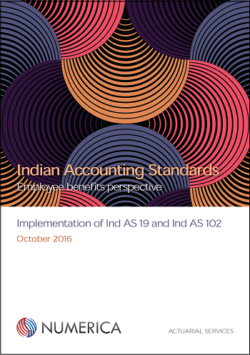
Setting the discount rate for actuarial valuation correctly is often not very well understood by the reporting companies. This post summarizes some of the most common questions our clients and their auditors ask about choosing the right discount rate. For a complete overview about setting the discount rate, please refer to this post.
1) What is the correct way to set discount rate for actuarial valuation for accounting?
Setting the discount rate involves constructing yield curves from the raw trading data. As an overview, this involves calculating the yields-to-maturity using traded Government Securities. Different traded bonds will have different YTM, depending on the term of each bond and therefore yields would be different for each term. They would then need to be smoothed, interpolated and extrapolated to produce the full yield curve. The discount rate chosen from the derived yield curve will be based on the expected duration of the asset / liability.
However, since the economic data related to bond trades is publicly available, several providers construct the yield curves and publish them. Companies can use the yield curves from these sources, after careful due diligence. It must be noted that not all yield curves are correct, complete or relevant for the purposes of actuarial valuation. Companies, their auditors and actuary will need to ensure that they understand the methodology used by the external provider and that it is appropriate for the task. More details about the process of setting the discount rate are provided here.
2) Who should set the discount rate? The actuary or the company ?
The actuary may propose a discount rate for actuarial valuation in the first instance, but the managers of the organisation should ensure that they fully understand why a specific rate was chosen for the valuation of liabilities. They must also ensure that the rationale for selection of the discount rate is fully disclosed in the actuary’s report. Ultimately, It is the company’s responsibility to provide all actuarial assumptions, including discount rates. More information about the governance framework around actuarial assumptions can be found here.
3) What is prescribed by the accounting standards?
Accounting standards do not prescribe a rate to be used, but prescribe the principles or method to determine the rate.
AS 15 and Ind AS 19 prescribe that the discount rate should be set in reference to the market yields on traded Government bonds. The currency and term of the government bonds are required to be consistent with the currency and term of the defined benefit obligations.
IAS 19 presribes the use of high quality corporate bonds (generally accepted to stand for AA-rated or higher). Where a deep, liquid market for corporate bonds doesn’t exist, as is the case with Indian market, yields on government bonds must be used, as under AS 15 and Ind AS 19.
US GAAP (ASC 715) also requires to the use of high-quality corporate bonds and do not force to use government bonds in the absence of a deep market. Therefore, companies reporting under ASC 715 can apply a credit spread to the discount rate, equivalent to AA-rated bonds. However, in the absence of a reliable measure of credit spread, many companies choose to use yields on government bonds (implying a zero credit spread).
4) Can a discount rate lower than that prescribed by Accounting Standards be used in actuarial valuation?
Discount rates depend on the yields as on valuation date and duration of the DBO.
Many companies argue that a lower discount rate is more prudent as it leads to a higher DBO. However, the use of any discount rate, higher or lower than what would have been otherwise used, would lead to non-compliance with the accounting standard. Accounting standards aim to represent a true ‘market-based’ value of liabilities. Therefore, the discount rate has to be set in reference to the market yields as at the date of valuation or reporting.
5) Can different sources lead to different estimates of discount rate?
Yes, different sources can lead to variations in discount rates. There are several methods used to construct yield curves and each method can produce slight variabilities in resulting yields. Broadly one would expect each method to produce similar results within a range of few basis points. However, some of the sources produce yield curves based on data which is not properly filtered, or may have other issues. Some sources may even contain technical errors in their estimates.
The best approach for the company is to use the rates from a reliable source. The reliability can be assessed in a number of ways; e.g. looking at the market reputation, literature published, qualifications of the individuals involved etc.
Companies should therefore try to stay with the same source year-on-year, for consistency purposes. Numerica uses rates published by Clearing Corporation of India and can be viewed here.
The company can also use rates recommended by the actuary, but must ensure that the actuary has set the rates correctly. Irrespective of how the rates are set, the full rationale must be disclosed in the actuary’s report.
Thinking about adopting or transitioning to Indian Accounting Standards (Ind AS)? Download our whitepaper on Ind AS from employee benefits perspective:

